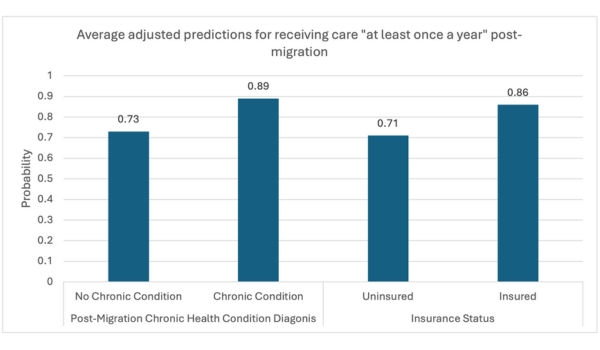Care and Coverage: Mexican Immigrants’ Health Care Access
Insurance status and chronic health conditions are factors that may increase health care access for immigrants along the U.S.-Mexico border.

Read Time: 2 minutes
Published:
Access to health care services is critical, and immigration status is one of the strongest predictors of an individual’s ability to receive care. Noncitizen immigrants, particularly those without legal status, are more likely to report barriers that cause them to delay or forgo necessary medical care compared to immigrants with U.S. citizenship.
Immigrants represent 13.8% of the U.S. population, with Mexican-born individuals representing nearly one-quarter of that total. Mexican immigrants are 18% less likely to access health care than U.S.-born citizens. Additionally, 37% of Mexican immigrants are uninsured, a rate higher than the overall foreign-born population. Both are particularly concerning, as Mexican immigrants are at higher risk of chronic health issues, such as diabetes, which require regular medical care.
Adriana Maldonado and colleagues evaluated health care access among Mexican immigrants in Southern Arizona. The researchers conducted a telephone-based survey with 300 participants between April 2022 and February 2023. While living in Arizona, 78.8% of respondents reported seeking medical care at least once a year.

The figure above illustrates that among these Mexican immigrants, individuals with a chronic condition had an 89% chance of receiving care, compared to 73% of those with no chronic illnesses (as shown on the left). Insurance also played a role: insured immigrants had an 86% chance of receiving care versus 71% of those who were uninsured (as shown on the right). The researchers concluded that both insurance coverage and chronic health conditions are important factors that increase health care access for Mexican immigrants along the U.S.-Mexico border.
Targeted interventions in the U.S.-Mexico border region could help bridge health gaps and promote equitable care and outcomes for this growing population.



